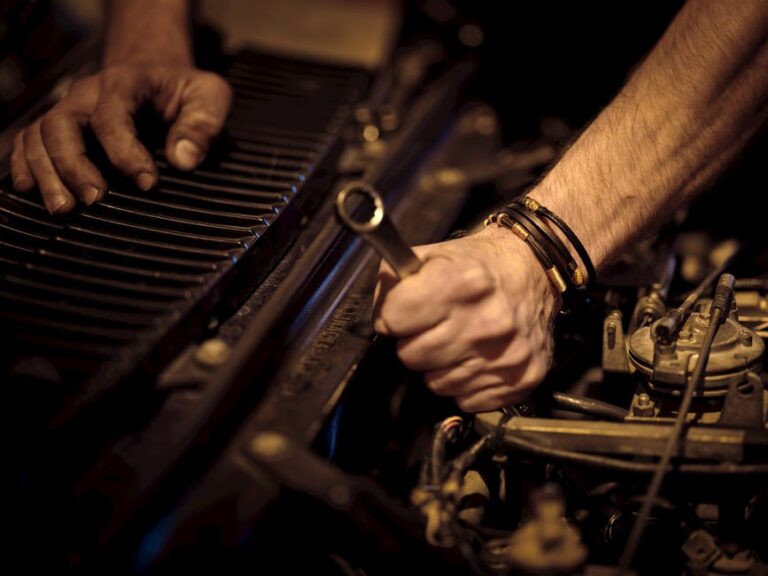Table of Contents
People sometimes forget that old wars weren’t just about swords. The Hundred Years War, which went on for a really long time, saw a bunch of cool new tech. This conflict, between England and France mostly, stretched out from 1337 to 1453. So, a lot of stuff changed during those years. People figured out how to make better weapons.
This wasn’t just small tweaks; these were big deals for fighting. New tools showed up on battlefields and sieges. They really changed how armies worked. Many ideas about war got thrown out the window. Old ways of fighting weren’t always useful anymore.
The fighting forced everyone to get clever fast. Countries needed an advantage over their enemies. So, they spent time and money making new things. Some of these inventions were pretty simple, but they made a huge difference. Other tech was complex for its time.
It’s crazy to think how much things moved forward back then. This period wasn’t stuck in time; it pushed boundaries. From how soldiers dressed to what they shot, everything got an update. Folks today might not see how big these changes were. But they set the stage for later wars.
The English Longbow’s Big impact
The English longbow was a super important weapon. It could shoot arrows really fast and far. This was way better than older bows. Archers could shoot maybe ten to twelve arrows every minute. That’s a lot of arrows flying through the air.
This rapid fire power changed battles for good. English armies, even when they were smaller, used longbows well. They could beat much bigger forces. Just look at places like Crécy or Agincourt. Those battles showed what longbows could really do.
Longbows needed lots of training to use right. Archers started learning from a young age. They had to be strong and practice a lot. This created a dedicated group of fighters. It also meant a whole new type of army. It was different from knights on horseback.
The arrows themselves were tough. They had sharp tips that could poke through armor. Sometimes they used bodkin points; those were like little spikes. These arrows went right through chainmail. It made knights vulnerable, something new for sure. They hadn’t faced this before.
So, longbows helped England win many early fights. They made cavalry charges risky. Knights riding in couldn’t just crash through archers easily. This made people think about battle plans differently. It also pushed for new kinds of armor.
Cannons and Gunpowder Show Up
Gunpowder weapons were maybe the biggest game-changer. They first popped up around this time. Early cannons were not super reliable. They often blew up, which was bad for everyone. But people kept working on them. They saw the big potential.
Early Gunpowder Use
Cannons changed how sieges worked. Before, castles were almost impossible to take. Walls were thick, and defenders had high ground. But cannons could smash stone walls down. This meant castles weren’t safe anymore. It was a huge shift.
Early cannons were big and clunky. They were hard to move around. So, people mainly used them for attacking castles. They’d set them up outside the walls. Then, they’d just blast away for days. Eventually, the walls would break.
These big guns used stone balls at first. Later, they made iron balls. Those hit even harder. The noise alone must have been terrifying. It was a new kind of fear for soldiers. No one had ever heard anything like it on a battlefield.
But using them was slow. Reloading took a long time. So, soldiers with cannons still needed protection. They couldn’t just stand there alone. Other troops had to keep enemies away. It was a teamwork thing, usually.
Siege Warfare and New Tools
Cannons weren’t the only siege tools. Trebuchets were still used a lot. They were giant slingshots that threw big rocks. Some could throw dead animals over walls too; pretty gross. This was meant to spread sickness inside.
Sappers were also busy; these guys dug tunnels. They would dig under castle walls. Then, they’d light fires in the tunnels. The heat would crack the stone, making the wall fall down. It was slow, but it worked. This was a sneaky way to attack.
Mining under walls was risky, though. Defenders could dig counter-tunnels. Then, they’d fight underground in the dark. Sometimes tunnels collapsed on the sappers. It was a tough job, definitely. Many didn’t make it out.
Siege towers let attackers get over walls. These were big wooden structures on wheels. Soldiers would climb inside and push them to the wall. Then, they’d drop a drawbridge onto the top. It was like a mobile bridge for soldiers.
Battering rams were used to break gates. These were big logs swung by many men. They had a strong metal head. Soldiers would push it hard against the gate. It took a long time but could eventually smash through. Gates were tough.
Better Armor for Soldiers
Armor got much better during this time too. Knights used to wear mostly chainmail. That was good but didn’t stop everything. Arrows could still poke through sometimes. So, people started adding plates of steel.
How Plate Armor Got Strong
Full plate armor became common. It was strong and covered nearly the whole body. This made knights much harder to kill. Arrows would bounce right off the smooth plates. It was like wearing a metal shell.
Making this armor was hard work. Blacksmiths had to hammer the metal just right. Each piece had to fit perfectly. It was expensive, too. Only rich knights could afford the best stuff. Poorer soldiers just had bits and pieces.
The armor was heavy, for sure. But it was designed well. It let knights move and even fight. They could still swing swords and ride horses. It was a big step up in protection. This meant fighting got even more dangerous.
This new armor was a response to longbows and early guns. When arrows started punching through chain, something had to change. Plate armor offered that answer. It helped knights stay important on the battlefield for a bit longer.
Naval Battles and Ship design
Ships were very important for the war. England needed ships to move its army to France. France needed ships to stop them. So, naval tech saw some updates too. It wasn’t just land battles.
Large ships called cogs were used a lot. They were mostly for carrying stuff and soldiers. But they could also fight. Later, bigger carracks showed up. These were even better for war. They had high sides.
These ships had castles built on them, like real forts. Archers and soldiers would stand in these. They’d shoot down on enemy ships. Sometimes, they’d try to board other ships. Sea battles were chaotic.
Cannons were put on ships eventually. This was a new thing. It changed how sea fights happened. Ships could blast each other from a distance. No more just trying to ram or board everything. Naval power really mattered.
Everyday Life and War Tech
The war tech wasn’t just about battles. It touched everyday life too. All the metalworking skills got better. Blacksmiths learned more about steel. This helped with other tools, not just weapons. It was like a spillover effect.
Fortifications Got Smarter
Castles had to change because of cannons. Walls got thicker and lower. They became round instead of square. Round walls were better at deflecting cannonballs. Square corners were easy targets for the big guns.
New forts were built differently. They had big earth mounds behind the walls. This absorbed cannon fire better. It was a smart way to make them stronger. Old castles were often updated to handle the new threats.
Defensive moats became wider and deeper. These made it hard to get close to the walls. Traps were sometimes hidden in them too. Defenders also used arrow slits differently. They made them narrower. This made it harder for enemies to shoot in.
So, architects and builders had to adapt. They needed to make places that could stand up to new weapons. This showed how war pushes people to invent. It wasn’t just soldiers on the front lines.
The War’s Tech Legacy
The tech from the Hundred Years War didn’t just disappear. It kept getting better. Cannons became more powerful and easier to move. Plate armor continued to get refined. These early ideas grew into modern things.
It feels strange to think about how old some of these ideas are. But they were really the start of something big. The war pushed people to innovate out of need. Survival depended on it. So, new ideas kept coming.
This whole period was like a big tech lab for warfare. Many things that we see in later wars began here. It shows that even in tough times, people figure things out. They adapt and try new stuff. It’s pretty wild, really.
What’s interesting is how fast some changes happened. In just over a hundred years, fighting looked totally different. From arrows ruling the field to cannons smashing walls. It proves how quickly things can shift.
Key Takeaways
Longbow Power: The English longbow changed how battles were fought; it gave smaller armies a big edge.
Gunpowder Arrival: Cannons showed up and made old castles less safe; they blasted stone walls down.
Armor Updates: Plate armor got much stronger to protect against new weapons; knights became walking tanks.
Naval growth: Ships got bigger and better for war; they even started carrying cannons for sea fights.
Building Changes: Forts had to change their design; walls got thicker and rounder because of cannons.
Frequently Asked Questions
Q: What was the most important weapon developed during the Hundred Years War: The cannon was maybe the most important; it changed siege warfare for good.
Q: How did the longbow impact traditional knights: It made them very vulnerable; their old tactics didn’t work as well against fast, strong arrow volleys.
Q: Did plate armor stop cannonballs: No, it couldn’t stop direct cannon hits; it was good against arrows and sword cuts, but not big blasts.
Q: Were all armies using gunpowder weapons by the end of the war: Not all, but they were becoming more common; bigger armies were starting to use them regularly.
Q: How did castles change because of the new tech: Castles were built differently, with thicker, lower, and rounder walls; older castles got updated defenses.












